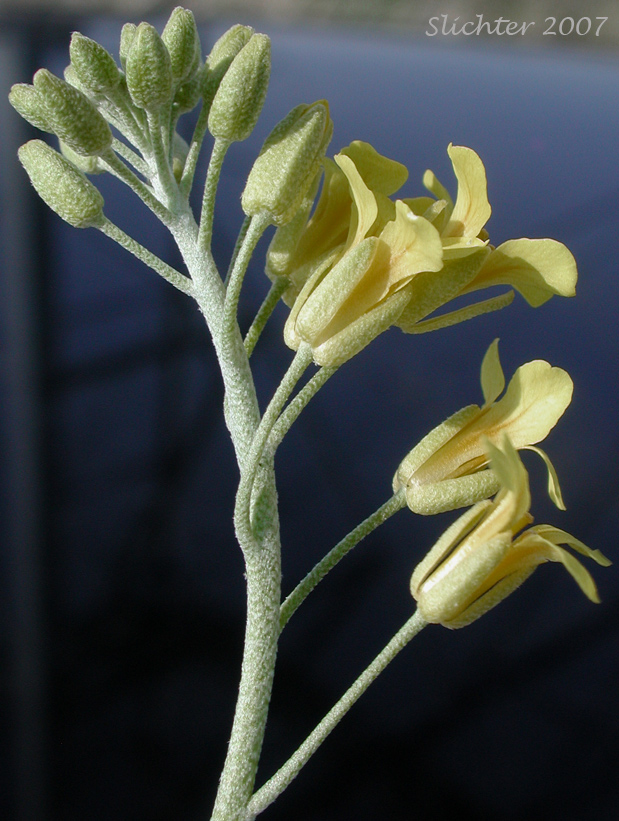
Columbia bladderpod (or Douglas' bladderpod) is a perennial wildflower with several to many ascending to erect stems arising 20-40 cm from a cluster of basal leaves. The stems may be simple or branched. The herbage consists of whitish, closely appressed hairs. The basal leaves range from 3-12 cm long with oblanceolate to obovate blades, the blades from 2-15 mm wide and tapering gradually to slender petioles as long as the blades. The leaf margins range from entire to slightly toothed (See photo of basal leaf below). The stem leaves are much reduced in size and linear to linear-oblanceolate in shape.
The light yellowish flowers are found on the upper stems. Each of the four petals is 6-9 mm long. The fruits are globose, slightly wider above the middle with the style perched atop the fruit. The style is generally about equal to the length of the fruit (See photo above.)
Columbia bladderpod may be found on sandy and gravel bar soils near rivers and into arid ponderosa pine forests.
Columbia bladderpod may be found east of the Cascade Mts. from British Columbia south to northern Oregon and east to Nez Perce County, Idaho.
In the Columbia River Gorge it may be found at an approximate elevation of 200'-500' from the Avery sand pit east towards Umatilla, OR.
